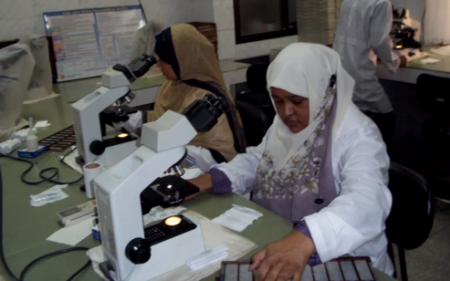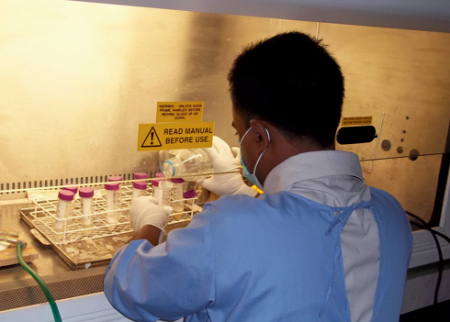Dhaka, Bangladesh – MDR-TB is Multi-Drug Resistant Tuberculosis. As the name suggests it is much harder to treat than “regular” TB.
There are several different kinds of “first line” drugs that can be used to treat regular TB. If one of those first line drugs does not work (which sometimes happens when patients fail to fully complete their treatment regimens) doctors will prescribe a different drug. If it turns out the strain of TB is resistant to that other drug, the doctor will prescribe a third…and so on. In all, there are five first-line drugs to cure TB. If each of those five drugs don’t work, the patient is said to be suffering from MDR-TB.
MDR-TB is not necessarily more deadly than regular TB, but from a public health perspective it is a huge disaster. Here in Bangladesh the cost of treatment per TB patient is between $12 and $24. The cost of treating an MDR-TB patient is approximately $2,300.
For years, when poor people were diagnosed with MDR-TB there was simply no way for them to access the expensive “second line” drugs. It is a curable disease, but people were dying from it for the basic fact that they could not afford the treatment. Their governments, too, were unable to subsidize the cost of these drugs. Patients would simply be left to die.
With the advent of the Global Fund to Fight AIDS, Tuberculosis and Malaria in 2002, some money began to flow to developing world countries to set up MDR-TB programs. The cost of second line drugs were driven down through bulk purchasing and countries began to establish mechanisms to detect and treat MDR-TB.
I visited one of these programs in Dhaka, Bangladesh.
The National Institute of Diseases of the Chest is a 685 bed hospital in Dhaka. In one wing of the building is the National TB Reference Laboratory to which positive TB samples are sent from clinics around the country. In 2008, through a grant from the Global Fund, the hospital created an MDR-TB ward. Since then, 513 patients have been admitted here.
Detection is key. These technicians from the National TB Reference Laboratory are examining so-called “smear positive” slides sent to them from local clinics to record the strain of TB. When there is a suspected case of MDR-TB, the slides are sent to a lab in Antwerp, Belgium for double checking.
The most cost-effective way to approach MDR-TB is: 1) to prevent it from emerging in the first place. Above all, that means implementing an effective first line defense. (You can read my posts about what Bangladesh is doing about that in rural communities and urban centers). 2) Get treatment to the patient as quickly as possible before he or she infects others with the resistant strain.
As first-line TB drugs become more widely available to people in the developing world, there will be more and more cases of MDR-TB popping up. Should MDR-TB go untreated and undetected, the costs for containment will only sky-rocket.
Preventing this emerging public health crisis is at first a moral issue–patients should not die simply because they can’t afford the drugs. But it is also an economic one. Intervening now will help contain the prevalence of MDR-TB and the high costs that go along with treating it — costs that are born by donors and governments.



